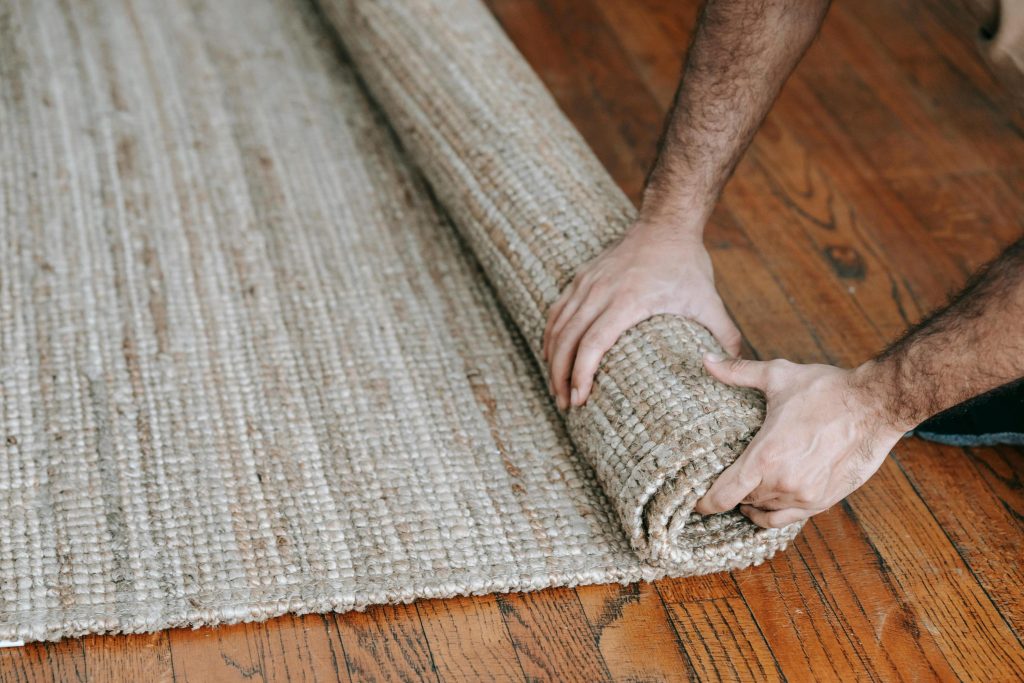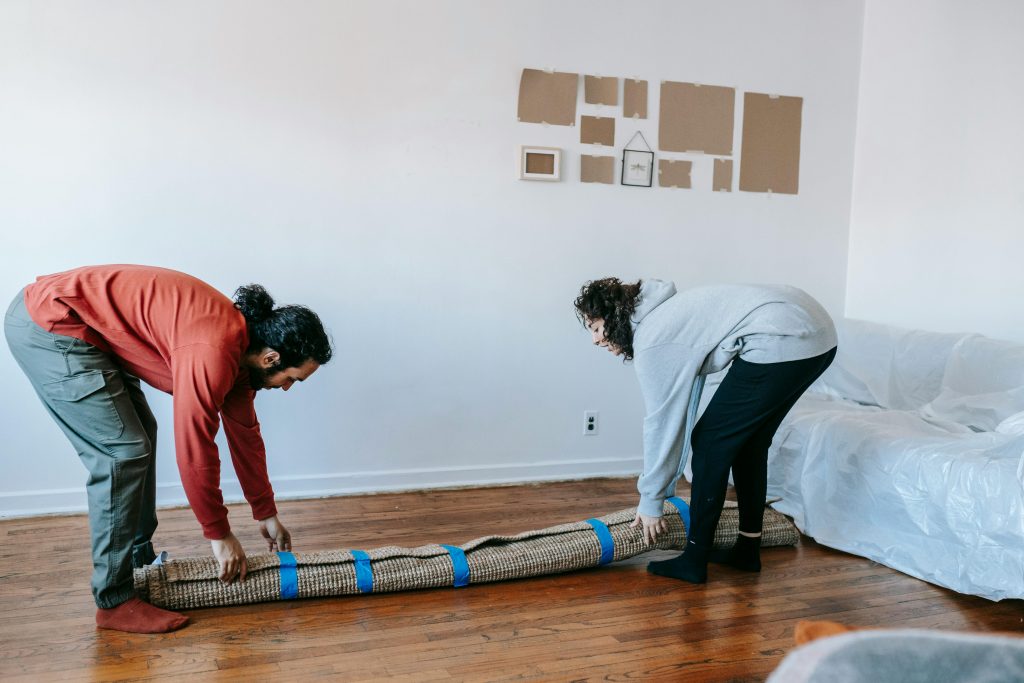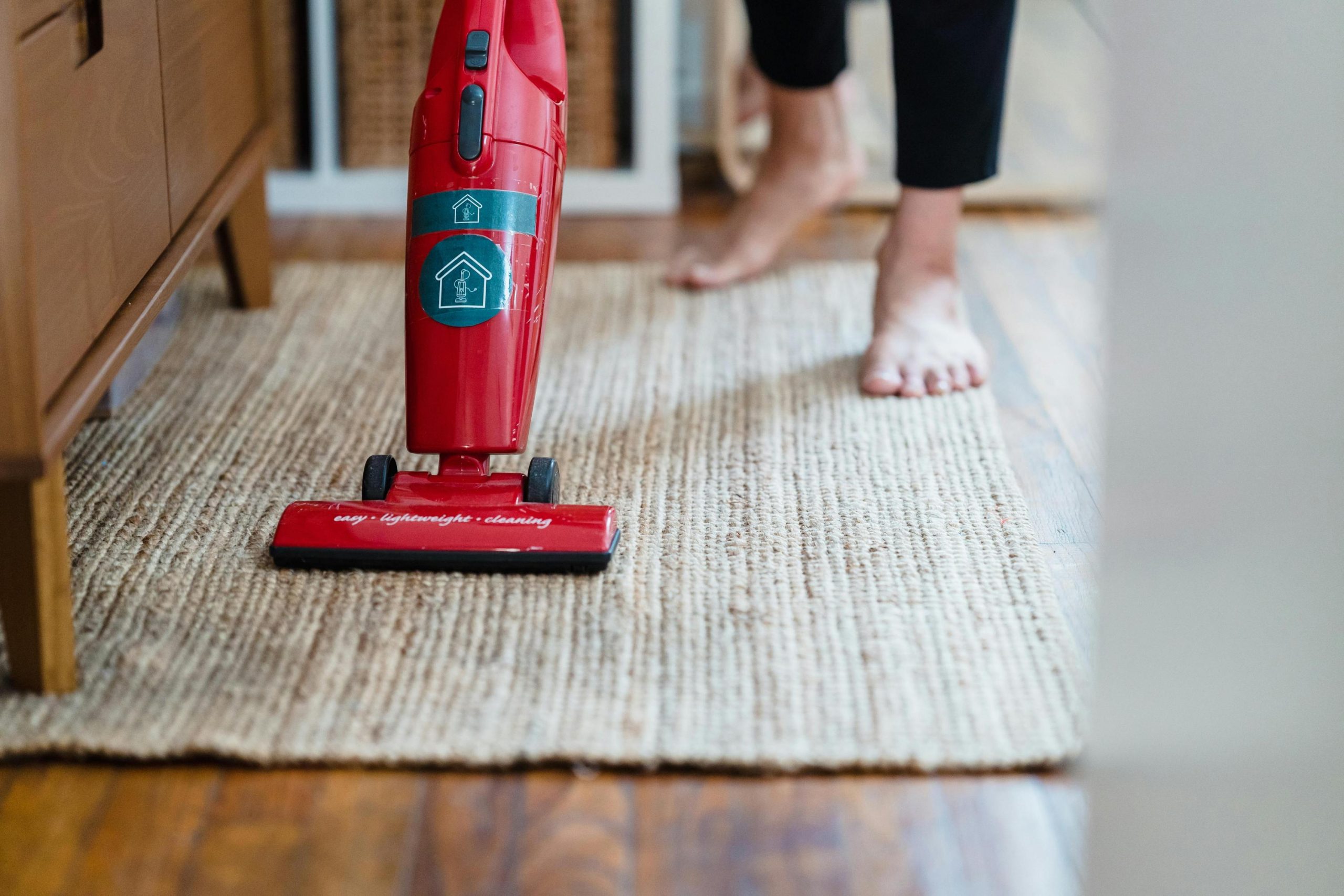Carpets add warmth and comfort to our homes, making rooms feel more cosy and stylish. But they also go through a lot of wear and tear. Over time, dirt, dust, pet hair, and spills build up. Without regular cleaning, your carpet can start to look old, smell bad, and even affect your health.
The good news? You don’t need fancy tools or chemicals to get your carpet looking clean again. This guide will show you how to clean carpet using methods anyone can follow—whether you’re tackling a small spill or doing a deep clean for the whole house.
Why Cleaning Your Carpet Matters

Carpets may look clean on the surface, but deep down, they can be hiding things you don’t want in your home. Dirt, dust, and debris get trapped in the fibres where they slowly build up over time. If not cleaned regularly, these hidden messes can affect your health, the way your home smells, and how long your carpet lasts. Some of the most common issues include:
- Dust and allergens: Carpets act like giant filters, trapping dust, pollen, and other allergens that come in from outside. Over time, these particles can build up and get kicked into the air as you walk across the floor, causing sneezing, coughing, and breathing problems—especially for people with asthma or allergies.
- Pet hair and dander: If you have pets, their hair and skin flakes (called dander) can cling to carpet fibres and settle deep into the layers. Even if you vacuum often, pet debris can stay trapped unless you deep clean. This can lead to lingering smells and may trigger allergic reactions for some people.
- Food and drink stains: Accidental spills from snacks, juice, coffee, or wine can leave behind stains that are hard to remove if not treated right away. These spills not only look bad but can also cause your carpet to smell if the moisture seeps in and attracts bacteria.
- Bacteria and mold: When liquid spills or water from cleaning isn’t dried properly, it can soak through the carpet and into the padding underneath. This creates a perfect environment for bacteria, mould, and mildew to grow—posing serious health risks, especially in damp or humid areas.
Regular carpet cleaning doesn’t just make your home look nice—it also plays a big part in creating a healthy living environment. Clean carpets mean fewer airborne irritants, less dust, and no lingering smells. Plus, by keeping your carpet in good shape, you’ll extend its life and save money in the long run by avoiding early replacements.
Types of Carpet Cleaning Methods
There isn’t just one way to clean a carpet. Different methods work for different types of dirt or stains. Let’s go over the most common carpet cleaning methods and when to use each.
1. Vacuuming
Vacuuming is your first line of defence. It picks up loose dirt, crumbs, dust, and pet hair before they get ground into the carpet.
- How often: At least once per week. If you have kids or pets, aim for 2–3 times a week.
- Tools to use: A vacuum with strong suction and a rotating brush works best. Handheld vacuums are great for stairs or corners.
- Why it matters: Regular vacuuming prevents dirt from settling deep into the fibres, which helps your carpet last longer.
🧹 Extra Tip: Vacuum in slow, overlapping strokes and go in two directions (front to back and side to side). This pulls more dirt from the carpet.
2. Spot Cleaning
Spills and stains happen—especially in homes with kids or pets. Spot cleaning is all about quick action.
- Best for: Food spills, pet accidents, mud spots, or drink stains.
- Steps to follow:
- Blot the area with a clean, dry cloth to absorb as much liquid as possible.
- Use a gentle carpet cleaner or a mix of water and dish soap.
- Gently blot (don’t scrub) to lift the stain.
- Rinse with water and blot dry.
🎯 Pro Tip: Never rub a stain. This pushes it deeper into the carpet and can damage the fibres.
3. Steam Cleaning (Hot Water Extraction)
Steam cleaning is a deep-cleaning method that uses hot water and a cleaning solution to loosen dirt and bacteria.
- How it works: Hot water and cleaner are sprayed into the carpet, then sucked out using a machine, pulling dirt and debris with it.
- Where to get one: You can rent a machine from most hardware or grocery stores, or hire a professional cleaner.
- How often to do it: Every 6 to 12 months, depending on foot traffic.
🧼 Important Note: Always let your carpet dry completely to avoid mould. Use fans, open windows, or turn on the air conditioning to speed up drying.
4. Dry Carpet Cleaning
Dry cleaning is a low-moisture method that’s great for quick cleans or delicate carpet types.
- How it works: A dry cleaning powder is sprinkled over the carpet. A brush or machine is used to work it into the fibres. Then it’s vacuumed up.
- Why it’s useful: There’s almost no drying time, and it’s safer for some natural fibre carpets like sisal or wool.
🧃 Did You Know? Dry cleaning doesn’t go as deep as steam cleaning, but it’s a great choice for maintenance between deep cleans.
Step-by-Step: How to Clean Carpet at Home

Here’s your easy-to-follow plan for cleaning your carpet like a pro, even if you’ve never done it before.
Step 1: Clear the Room
Move furniture, toys, and rugs out of the way. This gives you full access to the carpet and prevents you from missing spots.
- Tip: Place foil or wood blocks under furniture legs if you can’t move large items. This protects them from moisture and avoids rust stains.
Step 2: Vacuum Thoroughly
Start by vacuuming the entire carpet. Go over it slowly and make sure you don’t skip the edges or corners.
- Use a crevice tool for hard-to-reach places.
- For pet hair, use a vacuum with a special pet brush or roller.
🎯 Pro Tip: Sprinkle a bit of baking soda on the carpet before vacuuming to help remove odours.
Step 3: Spot Treat Stains
Before doing a full clean, look for any stains that need extra attention.
DIY Carpet Stain Remover Recipe:
- 1 tablespoon dish soap
- 1 tablespoon white vinegar
- 2 cups warm water
Mix the solution and apply it to the stain using a clean cloth. Blot (don’t rub) and repeat until the stain lifts. Rinse with water and blot dry.
🍷 For wine or juice stains: Blot with club soda before using the cleaning solution.
☕ For coffee or tea stains: Use a mix of white vinegar and water, then blot dry.
Step 4: Deep Clean the Whole Carpet
Choose either steam cleaning or dry cleaning based on your needs.
If Steam Cleaning:
- Fill the machine with hot water and the cleaning solution.
- Move the cleaner slowly across the carpet in sections.
- Make a second pass with only water to rinse out soap residue.
If Dry Cleaning:
- Sprinkle dry cleaning powder evenly.
- Use a brush to work it into the fibres.
- Let it sit for 30–60 minutes.
- Vacuum thoroughly.
🧽 Don’t over-wet the carpet. Too much water can lead to mold or mildew.
Step 5: Let the Carpet Dry
This step is very important—wet carpets can develop odours and grow mold if not dried properly.
- Open windows or turn on fans.
- Avoid walking on the carpet until it’s fully dry.
- If possible, keep pets and kids off the carpet for at least 6–12 hours.
Easy DIY Carpet Cleaning Solutions
If you’d rather skip store-bought products, these homemade cleaners are safe, affordable, and effective.
1. Baking Soda & Vinegar
Great for lifting stains and removing odours.
- Sprinkle baking soda over the carpet.
- Spray a mix of 1 part vinegar and 1 part water.
- Let it fizz, then blot with a clean cloth.
- Vacuum once the area is dry.
2. Hydrogen Peroxide (For Light Carpets Only)
- Mix equal parts hydrogen peroxide and water.
- Spray lightly on stains.
- Blot and rinse with water.
⚠️ Warning: Hydrogen peroxide can bleach dark carpets—always test on a hidden area first.
How Often Should You Clean Your Carpet?
How often you should clean your carpet depends on your lifestyle, foot traffic, and whether you have pets or allergies in the household. In general, vacuuming should be done at least once a week to remove dust, crumbs, pet hair, and everyday dirt before it gets deep into the fibres. High-traffic areas like hallways, living rooms, and entryways may need vacuuming two to three times a week. Spot cleaning, on the other hand, should happen as soon as a spill or stain occurs. Acting quickly can prevent permanent marks and lingering odours.
Deep steam cleaning is recommended every six to twelve months for a full refresh that removes embedded dirt, bacteria, and allergens. If you have pets, children, or anyone with allergies, it’s wise to do it more frequently—about every six months. For ongoing maintenance between deep cleans, light dry cleaning every three to six months is helpful. This keeps your carpet looking and smelling fresh without the drying time of steam cleaning. Sticking to a regular cleaning routine not only extends the life of your carpet but also helps maintain a healthier living environment for everyone in the home.
When to Call a Professional Carpet Cleaner
Sometimes, a DIY clean just isn’t enough. Here’s when you might need to bring in the pros:
- You’re dealing with old, deep stains.
- The carpet smells bad even after cleaning.
- There’s water damage or mold.
- You don’t have the time or tools to do it yourself.
Professional cleaners use powerful machines and special treatments that go deeper than home methods. They can also help extend the life of your carpet.
Tips to Keep Your Carpet Cleaner Longer
Prevention is the best way to keep your carpet looking and smelling fresh. Try these simple habits:
- Use door mats: Place mats at all entrances to trap dirt, mud, and debris before it reaches your carpet. Outdoor mats scrape off heavier grime, while indoor mats catch finer dust. This simple step keeps most of the mess outside where it belongs.
- Remove shoes indoors: Shoes carry in dirt, bacteria, oils, and tiny rocks that can damage carpet fibres over time. By taking your shoes off at the door, you’ll reduce wear and tear and keep your carpets looking newer for longer.
- Vacuum high-traffic areas more often: Places like hallways, living rooms, and entryways get a lot of foot traffic, which leads to faster dirt buildup. Vacuum these areas two to three times a week to prevent dirt from settling deep into the fibres.
- Clean spills immediately—don’t let stains set in: The longer a spill sits, the more likely it is to leave a permanent stain or bad smell. Blot the area right away with a clean cloth and use a gentle cleaner to lift the mess before it sets.
- Rotate furniture and rugs to prevent uneven wear: Heavy furniture can cause dents, while rugs and traffic patterns can create worn spots. By shifting furniture and rugs every few months, you’ll help the carpet wear evenly and avoid permanent indentations.
Final Thoughts
Knowing how to clean your carpet properly can make a huge difference in the comfort and cleanliness of your home. Carpets are a big part of many rooms, and when they’re clean, everything feels fresher and more inviting. With regular care—like vacuuming, spot cleaning spills right away, and doing a deep clean every few months—you can protect your carpet from stains, wear, and allergens. These simple habits also help maintain better air quality and create a healthier space for your family, especially if you have pets, kids, or allergy sufferers in the house.
The good news is, keeping your carpet clean doesn’t have to be expensive or time-consuming. You don’t need fancy equipment or harsh chemicals to get great results. Many cleaning solutions can be made from items you already have at home, and just following the basic steps in this guide can give you professional-looking results without the professional price tag. By staying on top of routine maintenance and acting fast when messes happen, you’ll keep your carpet looking great and lasting longer—while making your home a cleaner, more comfortable place to live.


